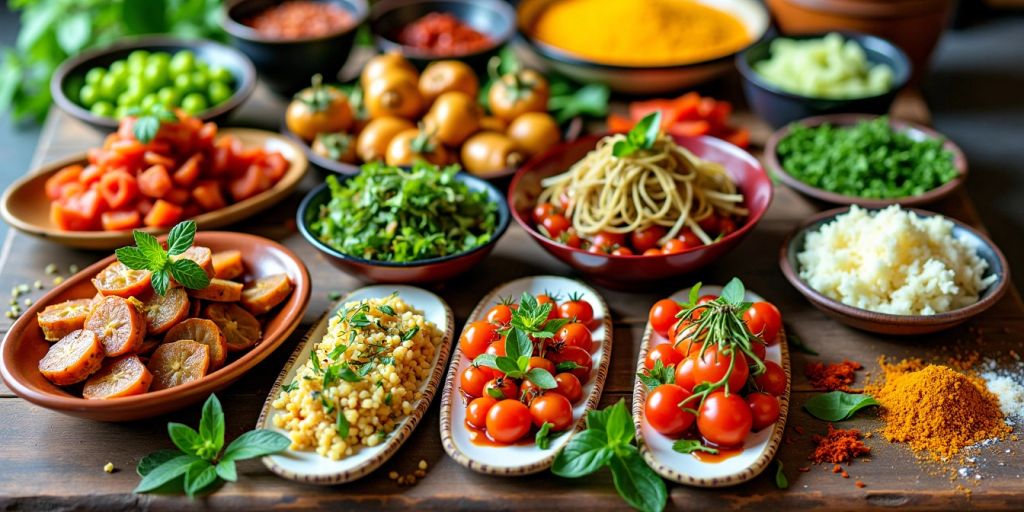Seasonal Menu Changes: Keep Your Offerings Fresh and Exciting

Restaurants should avoid monotonous menus at all times. Offering the same dishes year after year can lead to decreased customer interest in your establishment.
A seasonal menu keeps things fresh by constantly introducing new and exciting flavors. Your restaurant benefits from unique ingredients and creative combinations that enhance culinary appeal.
Seasonal menus provide customers with a sense of novelty each season, making it essential for restaurants to stay updated with seasonal offerings.
Table of Contents
The Importance of a Seasonal Menu in Restaurants
A restaurant thrives by adapting its menu to align with seasonal ingredients. This approach allows for the use of the freshest produce, enhancing both the taste and quality of dishes.
Utilizing seasonal foods also demonstrates support for local agricultural supply chains. Fresh, high-quality ingredients contribute to positive dining experiences, which are key to customer satisfaction and retention.
Regular menu changes generate excitement among customers. Diners look forward to new flavors that reflect the time of year. In the summer, restaurants may offer fresh fruits and light fare, while winter menus emphasize warm, hearty dishes.
From chocolates, especially mushroom chocolate bar packaging, to ice creams, each food item has its own fan base.
Seasonal selections maintain customer interest and encourage repeat visits for updated menu options.
Additionally, seasonal menus help reduce operational costs. When ingredients are in season, they are more abundant and, therefore, more affordable. This allows restaurants to create high-quality dishes at various price points compared to traditional, static menus.
A seasonal approach also provides flexibility, making it easier to adjust the menu when certain ingredients become too expensive or unavailable.
How to Keep Offerings Fresh and Exciting with a Seasonal Menu
Plan Your Menu in Advance
Strategic preparation is crucial for a successful seasonal menu. Research ingredient availability and sourcing dates before selecting your dishes.
Planning several months ahead allows time for recipe development and testing. Building strong partnerships with suppliers ensures access to the best quality produce.
Focus on Fresh Ingredients
Fresh ingredients enhance the natural flavors of a dish. Customers can easily distinguish between fresh and processed or frozen ingredients. The fresher the food, the better the overall dining experience.
Balance New Dishes with Customer Favorites
While seasonal menus bring excitement, customers still expect their favorite dishes. You don’t have to change everything at once.
Retain popular menu items while introducing a few seasonal dishes to offer variety without alienating loyal customers.
Train Your Staff on Seasonal Changes
Your staff plays a crucial role in promoting a seasonal menu. They should be knowledgeable about new dishes, ingredients, and flavors.
Well-informed servers can confidently recommend seasonal dishes, enhancing the dining experience for guests.
Create Limited-Time Specials
Seasonal dishes don’t have to be permanent. Introducing limited-time specials creates urgency, encouraging customers to try them before they’re gone. This strategy keeps the menu dynamic and increases excitement while allowing the flexibility to test new offerings before fully committing.
Incorporate Seasonal Ingredients into Signature Dishes
You don’t always have to create entirely new meals. Adding seasonal ingredients to existing dishes can give them a fresh twist.
For example, incorporating seasonal fruits into salads or offering a winter variation of a popular soup keeps the menu exciting without a complete overhaul.
So, from mushroom powder to dried mushrooms in mushroom mylar bags, each food must be ready depending on the season.
Market Your Seasonal Menu Effectively
Customers need to be aware of seasonal menu changes. Use social media, email newsletters, and in-store promotions to spread the word.
Highlight seasonal ingredients and the inspiration behind new dishes. Behind-the-scenes content, such as chefs preparing seasonal specialties, can build anticipation and attract more diners.
Best Examples of Seasonal Menus in Restaurants
A well-designed seasonal menu, featuring carefully chosen ingredients, allows chefs to create exceptional dining experiences.
Summer menus often include refreshing dishes like watermelon and cucumber salads, strawberry and mint combinations, and Caprese salads with fresh basil and ripe tomatoes.
Light seafood dishes, such as grilled fish with arugula and citrus, keep menus contemporary and appealing.
As the season transitions to fall, comforting flavors replace summer’s vibrant selections. Dishes like butternut squash soup, pumpkin ravioli, and roasted Brussels sprouts with nuts become customer favorites.
Seasonal cocktails featuring cinnamon and pear infusions enhance the dining experience. Similarly, slow-cooked meats and root vegetables bring warmth to winter menus.
During winter, restaurants focus on hearty dishes featuring braised meats, onions, and carrots. Traditional dishes like osso buco with roasted potatoes create an exquisite winter dining experience. These meals pair well with spiced cranberry drinks or hot chocolate.
As spring arrives, fresh ingredients like asparagus, apricots, and peas dominate the menu. Desserts featuring figs and mango sorbets, along with refreshing lemon-pineapple cocktails, bring excitement to seasonal selections.
Following seasonal cycles allows restaurants to introduce new culinary concepts, build relationships with local suppliers, and attract more customers.
Also Read: 10 Things to Consider When Making a Restaurant Menu
Conclusion
To keep customers engaged, restaurants must continually refresh their menu selections.
A seasonal menu approach helps maintain high-quality standards while offering exciting new flavors. By utilizing fresh ingredients, managing costs effectively, training staff, and employing smart marketing strategies, restaurants can successfully transition to seasonal menu changes.
Consistently updating offerings ensures steady customer traffic and enhances the overall dining experience.






